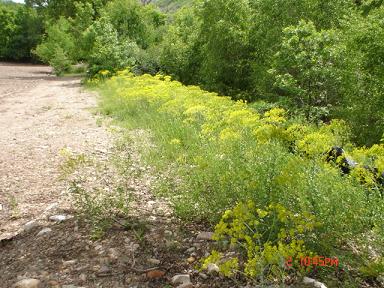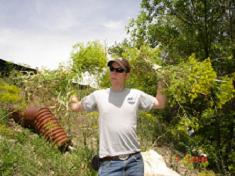Salt Lake City Kicks Up Invasive Weeds Program
1650 lbs of “Dyers Woad” removed from City Creek watershed during May 2006 weed pulling event
By: Vanessa Welsh
|
In recent years land owners in the state of Utah have realized that they are not immune to the widespread implications of invasive weed takeover. Rangeland managers were perhaps the first to realize that alien plants were poisoning livestock, increasing soil erosion and choking valuable waterways. In an attempt to diminish the problem, the Utah Department of Agriculture designated 18 of the worst culprits as ‘noxious weeds’, requiring land owners accommodating these noxious weeds to take care of the problem before they could spread to our treasured wildlands, private and public.
Salt Lake City, being a land management agency concerned with source water protection, is wary of these noxious weeds and their impacts on water quality. It is well documented that invasive weeds can alter susceptibility to floods, erosion, nutrient loading, water availability and groundwater recharge. The City is also concerned with how these weeds detract from the recreation experience in the protected watershed canyons of City Creek, Parleys, Big Cottonwood and Little Cottonwood. Anyone who has had a run in with an 8 foot tall Scotch thistle, or had to patch a bike tire after an encounter with puncture vine will likely agree.
Considering that weeds don’t honor property boundaries, this spring Salt Lake City joined the Bonneville Cooperative Weeds Management Area (BCWMA), a group of land managers working together to combat the weeds encroaching on the Salt Lake Valley and adjacent canyons. The goal of joining the BCWMA is to share expertise, equipment, and information with participating agencies like the Utah Department of Transportation, the Bureau of Land Management, the U.S. Forest Service, the Natural Resource Conservation Service, and local farmers among others.
|
This summer Salt Lake City Public Utilities is looking forward to completing the first comprehensive inventory of invasive weeds in City Creek and Parleys Canyons. The GPS and vegetation information from this inventory will help in cleaning up the existing problem in a financially feasible way and to start progressive projects to prevent problems in the future.

